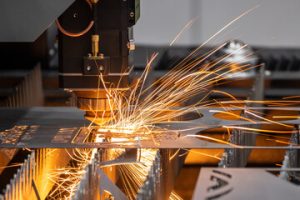Deck building transforms outdoor spaces into functional living areas.

Well-designed decks extend homes visually and practically. They blend aesthetics with durability to create enjoyable environments. Modern deck building focuses on materials, structure, and long-term usability. Every decision influences comfort, safety, and style. Visit https://www.deckbuildermurfreesboro.com to learn more.
The foundation is crucial in deck construction. Proper footings and supports ensure stability over time. Soil type, drainage, and load capacity determine the best approach. A strong foundation prevents costly repairs and hazards later.
Material choice affects both longevity and appearance. Traditional wood offers warmth and natural beauty. Composite materials provide low-maintenance alternatives. Each option balances cost, durability, and environmental impact.
Structural design has evolved to support multifunctional spaces. Decks now accommodate seating areas, dining zones, and garden features. Thoughtful layouts optimize flow and maximize usable square footage. Flexibility in design encourages more frequent outdoor use.
Safety considerations are central to deck building. Railings, stairs, and lighting prevent accidents. Non-slip surfaces reduce the risk of falls in wet conditions. Compliance with structural guidelines ensures peace of mind.
Environmental factors influence material selection and design. Sun exposure, rainfall, and humidity affect wear and fading. Weather-resistant finishes and coatings prolong deck life. Integrating shade structures or pergolas enhances comfort.
Sustainable building practices are increasingly important. Recycled or responsibly sourced materials reduce environmental impact. Proper waste management during construction prevents unnecessary debris. Green deck building aligns with modern ecological standards.
Decks often integrate with landscaping for a cohesive outdoor space. Planting beds, pathways, and water features enhance the visual appeal. Strategic placement also supports privacy and wind protection. Outdoor integration makes the deck a natural extension of the home.
Innovative lighting solutions extend usability after sunset. LED strips, solar posts, and recessed fixtures improve ambiance and safety. Lighting design enhances visual appeal while reducing energy consumption. A well-lit deck encourages evening gatherings and relaxation.
Modular deck building techniques simplify construction. Prefabricated panels or adjustable components reduce time and labor. Modular designs also allow easy expansion or modification. Flexibility in assembly adapts to changing needs and preferences.
Deck maintenance strategies have advanced with materials and treatments. Staining, sealing, and cleaning routines prevent decay and warping. Composite surfaces often require only basic washing. Regular upkeep extends lifespan and preserves aesthetic quality.
Balancing aesthetics with functionality is key. Curved edges, built-in seating, and multi-level layouts add visual interest. These features also serve practical purposes, like maximizing space and accommodating furniture. Design choices affect both beauty and usability.
Decks can enhance property value significantly. Well-constructed decks appeal to buyers looking for outdoor living options. The combination of durability, style, and safety makes them a strong investment. Long-term planning ensures that the deck continues to provide value.
Innovative railing systems improve both safety and style. Glass panels, metal balusters, and cable rails offer modern alternatives. These designs maintain visibility while ensuring protection. Railing selection complements overall deck aesthetics.
Outdoor kitchens and entertainment areas are increasingly popular. Integrated countertops, grills, and storage create multifunctional spaces. Proper ventilation and weather protection enhance usability. Deck building now often includes culinary and recreational considerations.
Deck roofs and pergolas provide shelter and extend usability. Shade structures reduce sun exposure and weather impact. Pergolas allow climbing plants to create natural cover. Covered decks increase comfort and encourage year-round use.
Custom storage solutions maximize space efficiency. Built-in benches, cabinets, and planters hide essentials while maintaining aesthetics. Organized storage reduces clutter and improves usability. Functional design supports both convenience and visual harmony.
Accessibility features are gaining importance in deck building. Ramps, wider pathways, and step-free entries improve inclusivity. Universal design principles allow everyone to enjoy outdoor spaces. Accessibility ensures that decks meet diverse household needs.
Technological integration enhances modern decks. Outdoor speakers, smart lighting, and climate control create connected environments. Automation allows residents to adjust settings remotely. Technology elevates comfort and convenience in deck usage.
Decks are increasingly designed to support wellness and relaxation. Meditation areas, yoga spaces, and lounge zones promote mental health. Strategic landscaping reduces noise and enhances privacy. Decks become personal retreats in urban or suburban settings.
Seasonal adaptability guides material and design choices. Removable screens, heaters, and weatherproof furniture extend usability. Adjustable elements allow enjoyment throughout the year. Adaptive design responds to climate variations effectively.
Deck building also addresses drainage and water management. Proper slope, gutters, and ground grading prevent water accumulation. Effective drainage protects structural integrity and prevents rot. Planning for water flow reduces long-term maintenance issues.
Color schemes and finishes influence deck perception. Natural stains emphasize wood grain, while bold colors create statement designs. UV-resistant coatings preserve vibrancy over time. Thoughtful finishes harmonize aesthetics with environmental exposure.
Acoustic considerations enhance outdoor experiences. Sound barriers, textured surfaces, and plantings reduce noise intrusion. Controlled acoustics support conversations, music, and relaxation. Decks become private, serene spaces even in busy neighborhoods.
Decks for elevated areas require careful engineering. Load-bearing analysis ensures safety and stability. Wind and seismic factors influence material selection and bracing. Proper structural planning prevents long-term issues in challenging sites.
Multi-level decks offer versatility and unique experiences. Staggered platforms create separation for different activities. They also add architectural interest and visual depth. Multi-level designs enhance functionality without sacrificing aesthetics.
Green roofs and rooftop decks are emerging trends. These spaces provide insulation, environmental benefits, and outdoor enjoyment. Planters, seating, and pathways transform rooftops into usable areas. Innovative deck building expands possibilities vertically as well as horizontally.
Maintenance-free materials simplify long-term care. Composite boards, aluminum railings, and synthetic finishes reduce upkeep. Fewer maintenance demands encourage frequent use. Modern materials combine convenience with durability and style.
Deck orientation affects sunlight, wind exposure, and privacy. South-facing decks maximize light, while strategic placement blocks harsh sun. Wind patterns influence comfort and plant selection. Orientation planning improves usability year-round.
Outdoor furniture selection complements deck design. Modular, weatherproof pieces allow flexibility and comfort. Seating arrangement influences flow and usability. Furniture and deck design work together to enhance enjoyment.
Decks can include integrated water features. Fountains, ponds, or small waterfalls provide ambiance and cooling effects. These features require careful planning for drainage and maintenance. Thoughtful integration creates sensory-rich environments.
Deck building projects benefit from careful project management. Scheduling, budgeting, and labor coordination reduce errors and delays. Clear planning ensures high-quality results and timely completion. Professional management maximizes efficiency and minimizes stress.
The future of deck building emphasizes customization, sustainability, and technology. Adaptive designs, durable materials, and integrated smart features define modern trends. Decks are no longer simple platforms—they are complete outdoor living solutions. Homeowners gain spaces that are functional, stylish, and enduring.
Outdoor decks are evolving into hubs for lifestyle and creativity. They combine comfort, safety, technology, and design into harmonious environments. Each element—from foundation to finish—matters in achieving the ideal space. Modern deck building represents a balance of engineering, artistry, and long-term usability.
Deck building continues to transform outdoor living with thoughtful innovation. Material science, design techniques, and technology merge to create dynamic spaces. Every deck becomes a tailored extension of the home. In this new era, deck building is both functional craftsmanship and inspired design.




